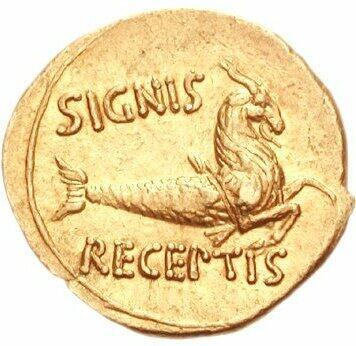Getting your Trinity Audio player ready...
Zodiac symbols were previously not found in Egyptian rock art, but a groundbreaking discovery has revealed their first known depiction: a petroglyph of a hybrid creature with the head of a goat and the body of a fish, identified as Capricorn. This finding, reported on the science, research and technology news site phys.org, offers new insight into the cultural and astrological exchanges of ancient civilizations.
Dr. Linda Evans, an associate professor in the Department of History and Archaeology of Macquarie University in Australia, along with her team, analyzed the history of the zodiac, its adoption in Egypt, and its significance to determine the likely time period and purpose of this petroglyph. Their findings were published in the Journal of Egyptian Archaeology.
The petroglyph was discovered during fieldwork at the ancient site of El-Hosh, located west of the Nile Valley between Aswan and Edfu. El-Hosh is renowned for its rich collection of petroglyphs and inscriptions, most of which date to prehistoric Egypt, although some are associated with the Greco-Roman and Islamic periods.
What makes this discovery even more intriguing is the proximity of the Capricorn petroglyph to another depicting a chameleon. "At first, the hybrid creature seemed like a mythical animal, but after detailed analysis, I realized it was a goat-fish," explains Evans. "This led us to explore its historical and astrological significance."
The origins of Capricorn can be traced back to Mesopotamia, where the Sumerian god Enki (and his Akkadian counterpart, Ea) was often depicted with streams of water and fish flowing from his shoulders, symbolic of his role as a patron deity of freshwater. A cylinder seal dating to 2112–2004 BCE contains the earliest known representation of this connection between a goat and a fish, later referred to as the "sea goat."
In Mesopotamian cosmology, gods were closely associated with celestial bodies. Enki-Ea symbolized the Capricorn constellation, which lies at the edge of the celestial region known as "the sea," home to water-related constellations like Eridanus, Cetus, Pisces and Aquarius. Stars and planets were believed to influence human life, serving as tools for predicting natural events, wars, and other phenomena – leading to the development of some of history’s earliest horoscopes.
The zodiac spread from Mesopotamia to Greece in the 5th century BCE and later to Rome. By approximately 300 BCE, zodiac symbolism had reached Egypt, appearing on the ceilings of Ptolemaic temples (circa 44–30 BCE). During the Roman period, zodiac symbols, including Capricorn, were depicted on temple ceilings, coffin lids, tombs and even coins. This imagery wasn’t limited to Egypt’s elite but also reached lower social classes, suggesting widespread familiarity with zodiac symbolism during this period.
Get the Ynetnews app on your smartphone: Google Play: https://bit.ly/4eJ37pE | Apple App Store: https://bit.ly/3ZL7iNv
Given the astrological importance of the zodiac, it’s likely that the creator of the Capricorn petroglyph understood its astronomical significance or reproduced it based on prior knowledge, perhaps from a coin or personal memory. According to the researchers, the petroglyph’s rough execution suggests the latter scenario is more plausible.
Dr. Frederick Hardtke, a member of the research team, notes that Egyptian petroglyphs became cruder after the advent of writing."Most evidence indicates the zodiac was introduced to Egypt from Greece and Rome. Rock art from the Greco-Roman period often features depictions of gods and animals, so it’s likely the Capricorn petroglyph was created during that era," he explains. "The goat-fish was found in a locality of el-Hosh, which hosts a large number of petroglyphs and texts, much of it Predynastic, but also material from the Graeco-Roman and Islamic periods. The goat-fish was found adjacent to another extremely unusual image of what we believe to be a chameleon. These two taken together make the panel that they are on rather enigmatic."
First published: 10:50, 11.27.24




